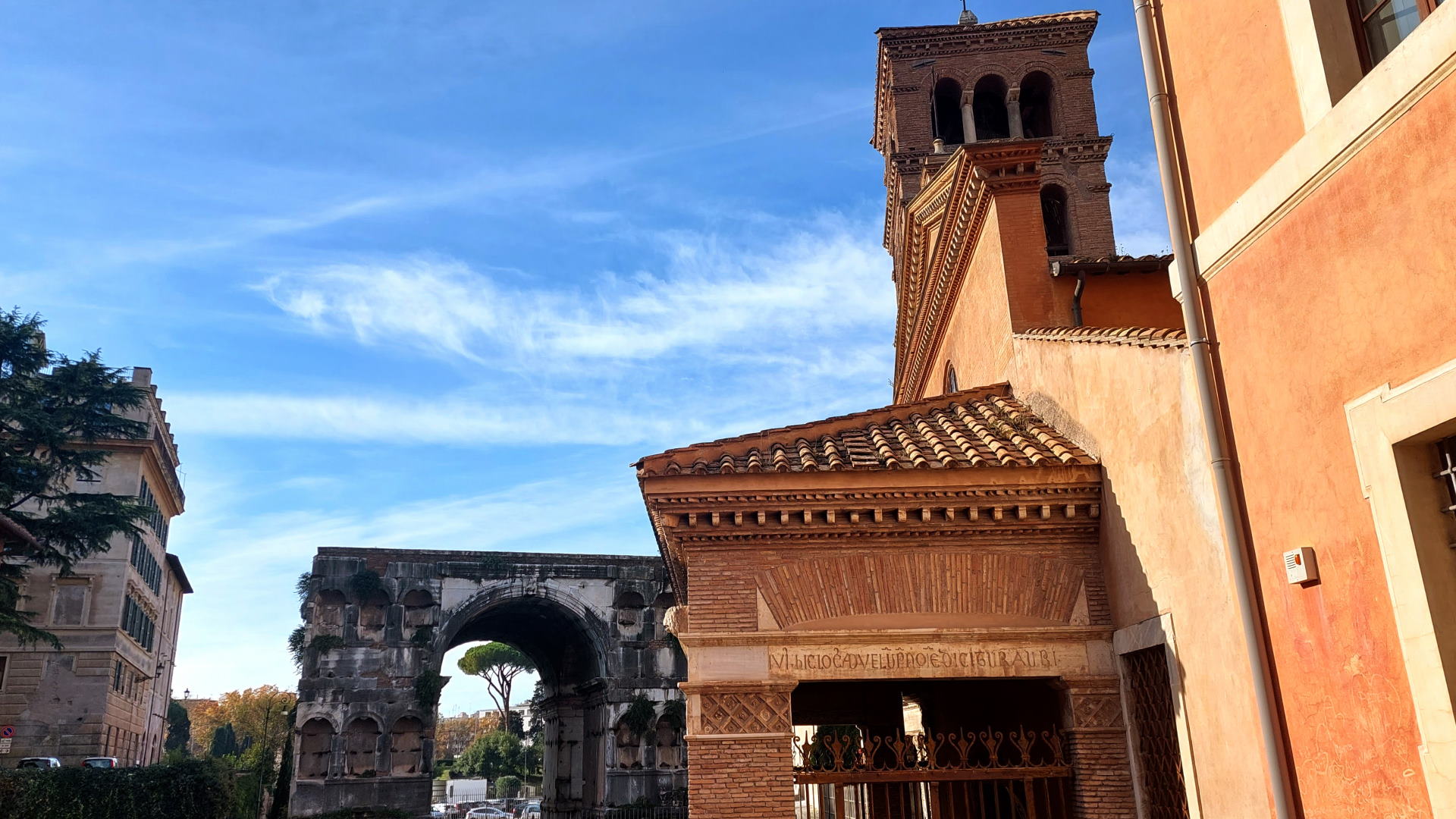
It is a hidden corner of the city but it has a special place in the legendary history of Rome. We are in fact in the center of the area called Velabrum and tradition claims that it was here that Romulus and Remus came ashore after being abandoned in a basket on the river as babies. At the time it was a low, marshy area but two Roman monuments attest to the importance that the area assumed in the following centuries: the Arch of Janus and the Arch of the Argentarii, the latter partly incorporated into the masonry of the church.
The church is of very ancient foundation but its origin is, as is often the case, shrouded in uncertainty. Its irregular plan seems to prove that it was built on an earlier Roman building and was perhaps one of the first diaconies established by Pope Gregory the Great, in the late 6th century. Shortly thereafter, Pope Leo II would name it after St. George and St. Sebastian, the two Eastern and Western soldier-saints, and the fresco in the apse would seem to indicate that devotion to both martyrs remained alive for a long time. The oldest reliable mention of the church, however, dates back to the 8the century, in the biography of Pope Zacharias who ordered the head of the Eastern martyr George to be transferred here from the Lateran. The dedication to the soldier-saint martyred in Cappadocia is unusual for an early church in western Europe but it is explained by the presence in the area of a flourishing Greek expatriate colony, which included Eastern monks who had fled the iconoclastic persecutions.
Major changes were made to the church in the 13th century: the rose window was opened in the façade and the portico was built, adorned by the entablature with an inscription in Gothic characters commemorating its donor, prior Stefano Stella, and similar to that of other Roman churches, for example, San Lorenzo fuori le mura and San Lorenzo in Lucina. The Romanesque bell tower, on the other hand, is earlier and dates to the second half of the 12th century. Numerous restorations followed over the centuries, partly to repair damage from frequent flooding in an area located below the level of the river. The current appearance of the church, however, is due to the radical and invasive work conducted in the 1920s by architect Antonio Muñoz, who restored the “ideal” original mediaeval forms of the church, destroying all later accretions, for example, the decorations and the elegant Baroque façade, and leaving the walls bare.
The layout of the church is simple. There is a nave of nine bays, with side aisles. The nave columns are ancient spolia, in grey granite or marble with Ionic and Corinthian capitals. Below the altar, elevated and surmounted by a 12th-century ciborium, is the “fenestella confessionis”, the little window that allowed the faithful to see the tomb or relics of the martyrs without, however, being able to touch them, in this case St. George’s head, spear and part of his battle-standard. The apse fresco was long attributed to Giotto but is now usually considered to be by Pietro Cavallini (one of the most important Roman painters and mosaicists of the 13th century) or by his school. The composition of the scene is similar to that of late antique apsidal mosaics, with Christ in the center. Here, Blessed Virgin Mary and St George on his horse are the left, while St. Peter and St. Sebastian, dressed in military garb, are on the right.
In July 1993 a terrorist attack destroyed the portico and gable of the church, leaving the Romanesque bell tower intact. After a long and careful restoration, the church was reopened in 1996.
Luoghi greci a Roma
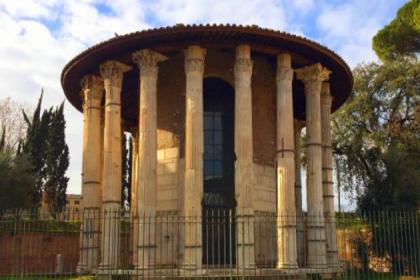
 Condividi
Condividi
The Basilica of Santa Maria in Cosmedin
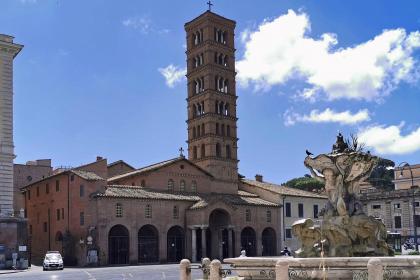
 Condividi
Condividi
Arch of Janus
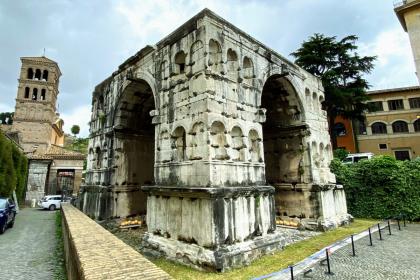
 Condividi
Condividi
Piazza Bocca della Verità
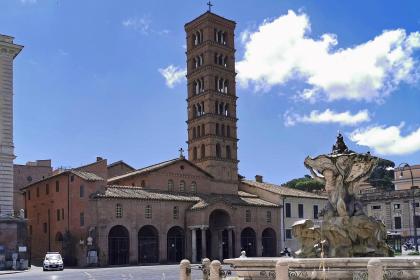
 Condividi
Condividi
Information
Time of Masses
Monday: 07.00Tuesday: 07.00Wednesday: 07.00Thursday: 07.00Friday: 07.00Saturday, Sunday and holidays: 08.30
From the beginning of April to the end of November: Holy Mass is celebrated in the churchFrom the beginning of December to the end of March: Holy Mass is celebrated in the convent chapel (Via del Velabro 19)
Times may be subject to change, so please always contact the church
 Condividi
Condividi
Location
To find out about all accessibility services, visit the Rome accessible section.











































